Below are all the different types of flintwork we can do for you.
Styles of Flintwork
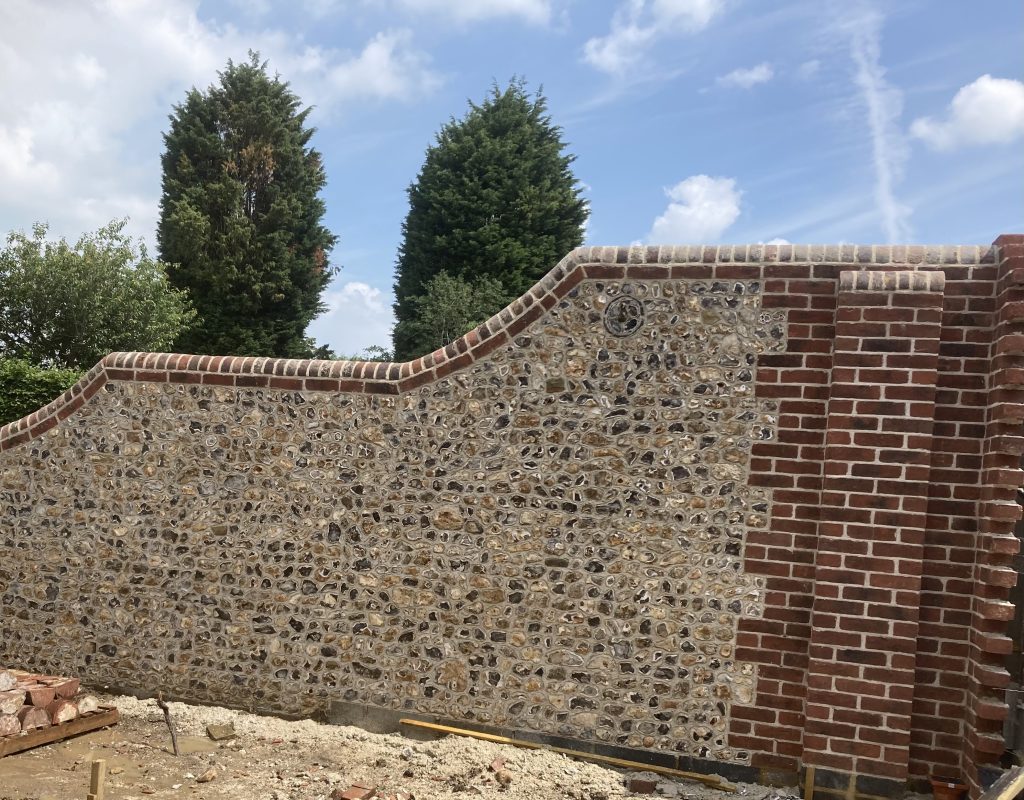
Random Semi-Knapped
Similar to random knapped, but less emphasis is put on the knapping and the use of more natural faces means that the wall instantly has a weathered appearance.
The joints need to kept fairly tight. If a nail is used to cut in slightly around each flint, the flints can appear more prominent which looks very effective.

Random Knapped
In this style the flints are knapped to give a flat face but are of random sizes and are not laid to courses. The joints are kept fairly tight so that the flint dominates the eye rather than the mortar.

Galletted Flintwork
Two names meaning exactly the same thing, the only difference being which area you come from.
A gallet is the name given to the small pieces of flint which can be pushed into the joints between the flints in any of the other styles. There are a number of reasons why this method is employed:
- To reduce the amount of mortar visible between flints
- To protect the mortar from weather damage and prolong the life of the work
- To give a more attractive and decorative appearance to the work
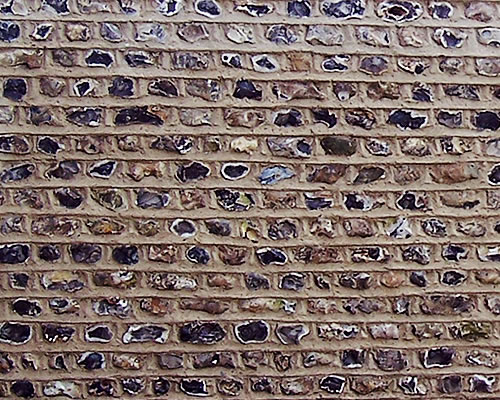
Coursed Flintwork
Field flints are generally used for this style. They need to be knapped to a height of about 60mm so that they can run in with brick courses.
A mixture of both knapped and natural faces makes for an attractive wall. The finish of the joints can be varied to match in with any existing coursed flintwork (i.e. heavily struck, recessed etc.).
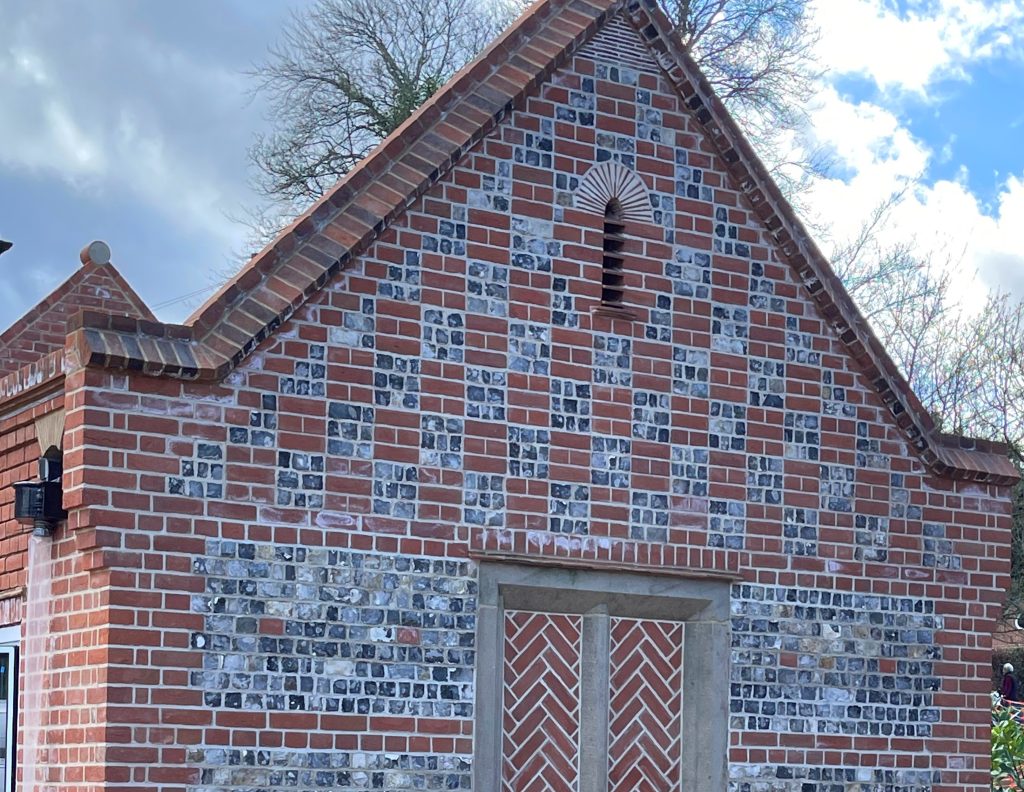
Square Knapped Flintwork
The flints have to be knapped so the face is flat and exactly the right height to run the courses (usually about 65mm). This is to ensure a thin bed joint is consistently maintained to enhance the look of the finished work.
The actual knapping is fairly labour intensive, making this the most costly style of flintwork to produce.
Quarried flints are used in squareknapping as they are the most suitable to work with.
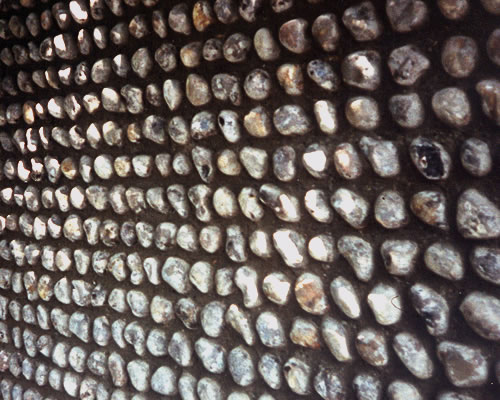
Cobblework
This style sees the pebbles laid in courses. No knapping is required and often the pebbles can be seen to be laid with a slant either to the right or left – a slant to the left indicates a right handed flint layer and vice versa.
The joints are normally recessed to expose more of the rounded face and, the smaller the joint, the more impressive the finished look of the work.
Types of Flint

Field Flint
As the name suggests, this type of flint is to be found in fields. The effects of erosion and also yearly ploughing of the land continually bring new flints to the surface. Local area knowledge tells us in which fields the flints will be most abundant and of the best quality for working with. Once the harvest is over, we do our utmost to go out into the fields and pick a quantity of flints to use on jobs in the forthcoming months.
The range of colours of field flints comprise to make a very attractive building material. “Natural” faces can often be used, or else the flints can be semi-knapped to result in the desired face. Flints from chalky ground are more favourable than flints from clay ground as they are much easier to work with.

Quarry Flint
This type of flint is produced as a by-product of chalk quarries. As the chalk is dug out, the flint is separated and stock piled for selling on for building purposes.
Quarried flint is the most suitable for knapping because it has not been exposed to the air and dried out, therefore, maintaining a consistency which can easily be shaped with a hammer.
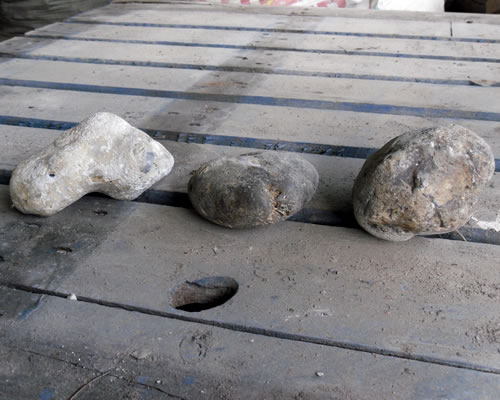
Beach Pebbles and Cobbles
Flint pebbles have been produced by erosion of the chalk cliffs and on exposed beaches they become rounded by the constant pounding of the sea.
Pebbles are laid in their natural shape (i.e. not knapped) and are almost always laid in courses with the joints recessed to expose more of the stone and less of the mortar.
